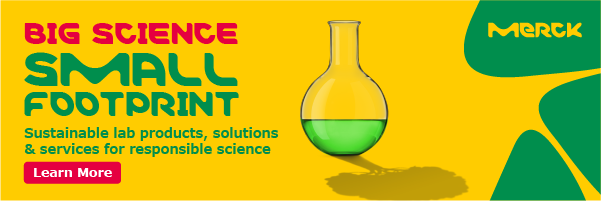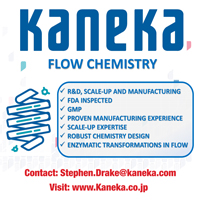Life Sciences
Savings that speak volumes: the economic benefits of perfusion bioprocessing 3rd January 2022
Recent advances in biopharmaceutical manufacturing technology have seen perfusion bioprocessing surge in popularity. In this article, Christopher Brau, R&D Process Development Manager at Thermo Fisher Scientific, examines this trend, highlighting its potential to enable cost-effective and highly productive processes.
Perfusion is a cell culture method that involves retaining cells within a bioreactor while replenishing nutrients through the exchange of spent medium with fresh medium. It can be used to enhance productivity throughout the bioprocessing workflow by accelerating the seed train or allowing for intensified production methods. While perfusion is often associated with the rising popularity of continuous production, the method can be implemented in a variety of ways, including N-1, concentrated or intensified fed-batch, and continuous perfusion.
Although perfusion has seen a recent surge in popularity, the method has been used by biologics manufacturers for decades. It was initially used in the production of unstable and cytotoxic proteins to maintain product quality and process productivity, particularly for hemophilic factors and recombinant protein treatments for rare metabolic storage disorders. Perfusion is increasingly being recognized by manufacturers for its productivity benefits, including the ability to achieve significantly higher viable cell densities than fed-batch operations. However, its adoption is still obstructed by concerns surrounding the economic impact of the switch and the complexity of operation. Here we discuss advances in biopharmaceutical manufacturing that make perfusion an increasingly popular choice, as well as the economic benefits and concerns surrounding the method.
Factors affecting perfusion uptake
Several factors have facilitated this uptake in perfusion, including the advancement of Industry 4.0. This movement within the bioprocessing industry, termed Bioprocess 4.0, involves the increased use and sophistication of automation and digitalization within processes. As automation and process control become simpler with improved monitoring and analytics, biologics manufacturers are becoming more confident in their ability to realize commercial benefits from implementing a successful perfusion process.
The increased stability of cell lines has also been a major contributing factor in the growing use of perfusion in recent years [1]. Stable cell lines can withstand the longer process durations associated with continuous perfusion, which supports steady growth rates that maintain high cell densities while ideally reducing the need for regular cell bleeding.
An industry-wide shift in business models has also affected the popularity of perfusion. While the blockbuster model of biologics development has previously been the norm, some biopharmaceutical manufacturers are starting to move away from large-volume, single-product facilities. Manufacturers are instead looking to develop a larger, more diverse portfolio of biologics that require lower-volume, modular, or even multi-product facilities. This transition strongly lends itself to the use of perfusion paired with single-use technologies. Key advances in the equipment used to support perfusion, including single-use technologies and cell retention devices, further support this shift and simplify the implementation of perfusion by providing increased process accessibility and flexibility.
All these factors are contributing to increased awareness of perfusion across the industry, and many manufacturers now possess the knowledge to apply perfusion to large-scale bioprocessing operations. Another critical contribution to the increased use of perfusion is the continued development of media formulations that enable higher cell densities and volumetric productivity.
Outsourcing media manufacture or qualifying a secondary or tertiary supplier has the potential to alleviate some of these pressures. In this time of unpredictability, having access to additional capacity is paramount to risk mitigation. Approval of multiple sites and vendors for media and bulk process liquids may be the best approach. In fact, strategic outsourcing may become an essential way for manufacturers to produce biologics over the next few years.
The role of the medium in perfusion processes
Cell culture media are considered a major cost-determining factor of a bioprocess. This is especially true when utilizing perfusion, as much larger volumes of media are required to maintain the process. Because the demands of a perfusion process differ from those of a fed-batch equivalent, alternative media formulations are required to maintain high viable cell densities and productivity. This must all be achieved while keeping the requirements for media volumes manageable. This means that many manufacturers prefer concentrated and ‘higher depth’ media to reduce necessary storage space as well as the total volume of media needed to maintain their processes. Achieving an economical and optimized cell culture medium formulation is vital to implementing a successful perfusion process.
Economic concerns around perfusion media
The primary economic concern related to perfusion is the purchase and preparation of cell culture media. With larger volumes of media required for perfusion per gram of product produced, the cost of purchasing media is typically higher than it is with fed-batch processes (Figure 1). Perfusion does, however, allow for a combination of a smaller operational footprint and fewer production runs. For example, a continuous perfusion process could use 1.2 to 1.7 times more media annually than a comparable fed-batch process. On the other hand, a comparable fed-batch process may require more than three times as many seed train and production runs in larger vessels. This could result in a higher total cost of goods per gram of product and increased risk due to more physical connections and operations (Figure 2).
Other media-related factors include the frequency of and labour involved in preparing and storing hydrated media. However, these factors can vary greatly between facilities. First, more medium will need to be prepared for perfusion than fed-batch, which often leads to some combination of more frequent preparation and/or a volume increase per preparation. The increased volume of medium needed per gram of product and its continual use lead to a relative increase in the labour needed to produce and manage it. Second, if a medium is prepared in advance of the process rather than on an ad hoc basis, storage can become difficult with large storage tanks required in dedicated GMP space.
Economic benefits of perfusion
Increased protein quality
Perfusion has a long history of being used to increase protein quality. The constant removal of spent medium from the bioreactor protects the product from degradative enzymes and physiochemical stresses that could lead to aggregation and differing charge variants. This is particularly true for continuous perfusion and intensified fed-batch perfusion processes, where the product is removed alongside the spent medium. The product can be quickly stabilized to maintain the desired post-translational modifications. More uniform glycosylation profiles can also be achieved when using perfusion due to the typically lower cellular growth rate compared to fed-batch processes [2]. The producing cells are also protected from cytotoxic products, as they are continuously removed with spent medium during a perfusion process.
Increased productivity
Perfusion yields much higher quantities of product when measured against comparable fed-batch processes. Typical mAb-based fed-batch processes are expected to yield around 0.3 g/L/day, whereas steady-state perfusion can produce 1–3 g/L per day. This increased productivity is partly due to the very much higher viable cell densities achieved in a perfusion process, which can reach 80-120 million cells/mL compared to 20-30 million cells/mL for a fed-batch process. Markedly more active pharmaceutical ingredient is generated per process run since the perfusion process can be run for longer periods, with continuous perfusion generally targeting 40 to 90 days compared with 14 days for a fed-batch process. Over a year, the number of runs required for a perfusion process is significantly reduced compared to a fed-batch process.
Smaller process footprint
One of the key advantages of perfusion processes is the reduced process footprint. The increased productivity of perfusion allows for production bioreactors that are generally 1/3 to 1/5 the size of those typically used for fed-batch processes. These advantages are further realized when single-use equipment is used as part of the perfusion process, which allows for rapid facility set-up and increased facility flexibility, as well as lower capital investment and risk.
Additionally, the number of process steps, sterile connections, and total cost can all be reduced in a production campaign through perfusion. The smaller scale-up requirements can result in a more compact and easier-to-manage seed train.
Cost of goods
In a direct comparison of a singular perfusion run vs. a singular fed-batch run, the direct bioprocessing costs—such as materials, labour and equipment—are higher with perfusion processes. However, the significantly higher product yield achievable in a single perfusion run greatly reduces the total number of necessary production cell culture runs. Additionally, the size of both the production reactor and its respective seed train vessels are decreased, often with a reduction in the required number of seed train containers. This leads to notably fewer physical connections and consumables required per annual production campaign. Fewer individual runs and longer steady-state operation of continuous perfusion allow the benefits of automation to be maximized and further reduce labour. Thus, the overall cost per gram of running a perfusion process can be as much as 20-40% lower than a fed-batch process when used for large-scale production (Figure 3).
Choosing a medium
The economic benefits of perfusion are largely due to the increased productivity achieved while keeping consumption of media manageable. To maximize productivity at lower medium flow rates, and hence cost savings, an optimized cell culture medium is critical. Media formulations designed to sustain the very high viable cell densities of perfusion processes should be utilized. Ideally, media that can also be used in concentrated form would be advantageous to reduce the space and volume of media required during runs. The process required to design a proprietary perfusion formulation can be lengthy and requires understanding the demands of a perfusion process. For this reason, catalogue options designed by experts in perfusion are an attractive option for use in a variety of processes, from seed train to production.
In conclusion
Many of the cost savings with perfusion are primarily due to an increase in productivity; however, there are several immeasurable benefits related to a decreased facility footprint and significant improvement in quality. These include the reduced need for horizontal and vertical facility expansion, smaller operating volumes that facilitate the effective use of single-use technologies, and the flexibility single-use technologies provide. While perfusion may seem to be an expensive undertaking for biologics manufacturers, particularly when comparing the cost of materials to that of a less media-intensive fed-batch process, the economic benefits of implementing the process can be profound. As the medium is a major cost-determining factor, choosing an optimized perfusion medium is critical to maximizing these benefits.
Figures generated from market research commissioned by Thermo Fisher Scientific, October 2020
For further information on Thermo Fisher Scientific’s cell perfusion technologies visit https://thermofisher.com/perfusion
REFERENCES
- Lohr B, Lyons D (2016) Perfusion in the 21st century. BioPharm International. http://www.processdevelopmentforum.com/articles/perfusion-in-the-21st-century/
- Lipscomb ML, Palomares LA, Hernández V et al. (2005) Effect of production method and gene amplification on the glycosylation pattern of a secreted reporter protein in CHO cells. Biotechnol Prog 21(1):40−49.



